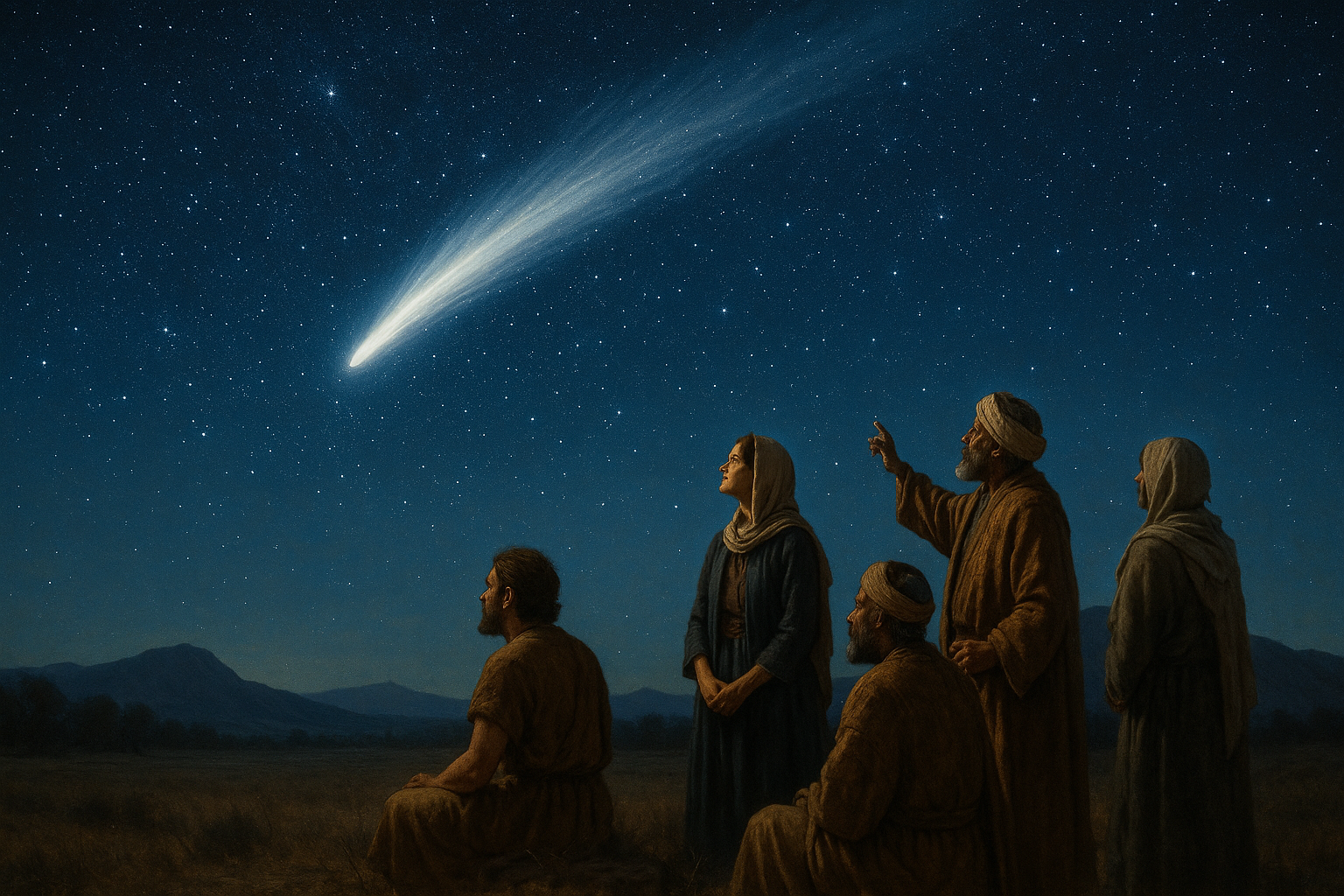In the heart of the German countryside, nestled amid sprawling fields and picturesque landscapes, lies a site shrouded in mystery and antiquity: the Goseck Circle. As one of the oldest solar observatories in the world, this enigmatic structure has captivated archaeologists, historians, and curious minds alike. With its concentric ditches and palisades, the Goseck Circle serves as a window into the prehistoric world, offering insights into the sophisticated understanding of astronomy possessed by our ancient ancestors. Join us as we embark on a journey to unlock the secrets of this remarkable site, where the past and the cosmos converge in a testament to human ingenuity and curiosity.
The Goseck Circle, often dubbed the “German Stonehenge,” predates its more famous counterpart by about two millennia. Discovered in 1991 through aerial photography and subsequent excavations, this Neolithic structure dates back to approximately 4900 BC. What initially appeared to be a simple arrangement of earthworks soon revealed itself to be an intricate observatory designed to track the movements of the sun. The significance of the Goseck Circle lies not only in its age but in the precision with which it was constructed, aligning perfectly with the winter solstice and marking a pivotal moment in the agricultural calendar. The ability of these early communities to observe and harness the cycles of nature speaks volumes about their relationship with the environment and their dependence on celestial events.
In our exploration of the Goseck Circle, we will delve into the history of its discovery, examining the archaeological methods that brought its mysteries to light. We will explore the cultural context of its builders, unraveling the social and religious implications of solar observance in Neolithic Europe. Furthermore, we will consider the technological advancements required to construct such an accurate solar calendar, shedding light on the ingenuity and resourcefulness of these ancient peoples. Alongside these historical insights, we will discuss the modern scientific investigations that have enhanced our understanding of the site, employing cutting-edge technology to reveal details invisible to the naked eye.

The Enigmatic Goseck Circle: A Window into Ancient Astronomy
The Goseck Circle, often heralded as one of the most intriguing archaeological discoveries in Europe, serves as a testament to the sophistication of early human societies in understanding and observing celestial phenomena. Located in the heart of Germany, this Neolithic structure has baffled archaeologists and historians alike since its discovery. As we delve into its mysteries, we uncover a wealth of information about how ancient civilizations interacted with the cosmos, using structures like the Goseck Circle as astronomical observatories and ceremonial sites.
Constructed around 4900 BCE, the Goseck Circle is among the earliest known solar observatories. Its discovery in 1991 marked a significant milestone in archaeology, offering insights into the ancient understanding of solar patterns. The structure comprises concentric ditches and palisades, forming a complex layout that aligns with the solstices, suggesting an advanced knowledge of the solar year. This layout indicates that its builders were keenly aware of the solar calendar and possibly conducted rituals linked to the agricultural cycles.
What makes the Goseck Circle particularly fascinating is its precise alignment with the winter solstice. Each year, around December 21st, the sun rises and sets in perfect alignment with the gates of the circle. This alignment is not a coincidence; rather, it demonstrates the builders’ astronomical prowess. The precision with which these ancient people aligned the circle is indicative of a deep understanding of the cosmos, possibly linked to spiritual or agricultural purposes. Such alignments suggest that the circle was more than just an observatory; it was likely a central hub for cultural and religious activities.
Understanding the Construction and Purpose
The construction of the Goseck Circle involved considerable effort and organization. The circle itself measures approximately 75 meters in diameter, surrounded by a ditch and two palisade rings. Archaeologists estimate that constructing such a site would have required a substantial labor force, implying the presence of a coordinated and hierarchical society. This labor-intensive construction signifies the importance of the site to the people who built it.
Researchers have proposed several theories regarding the purpose of the Goseck Circle. While its function as a solar observatory is widely accepted, its role in religious or ceremonial activities is also of interest. Some scholars suggest that the circle was used for rituals associated with the changing seasons, agricultural cycles, or even as a place for communal gatherings. The presence of human remains and animal bones at the site supports the idea of ritualistic activities, although the exact nature of these rituals remains speculative.
One of the most intriguing aspects of the Goseck Circle is its potential role as a center for social cohesion. In a time when communities were largely agrarian and dependent on the cycles of nature, the circle may have served as a focal point for community activities and a symbol of shared cultural identity. This social function would have reinforced the community’s connection to the natural world and each other, fostering a sense of unity and purpose.
Comparative Analysis: Goseck Circle and Other Ancient Observatories
To better appreciate the significance of the Goseck Circle, it’s helpful to compare it with other ancient observatories. The table below highlights key similarities and differences between the Goseck Circle, Stonehenge in England, and the Newgrange in Ireland.
| Feature | Goseck Circle | Stonehenge | Newgrange |
|---|---|---|---|
| Location | Germany | England | Ireland |
| Estimated Date | 4900 BCE | 3000 BCE | 3200 BCE |
| Primary Purpose | Solar Observation | Astronomical Alignment | Winter Solstice Sunrise |
| Structure Type | Concentric Ditches and Palisades | Stone Circles | Passage Tomb |
As you can see, while these structures share a common theme of astronomical significance, they each have unique features and purposes. The Goseck Circle stands out due to its age and the intricacy of its design, showcasing an advanced understanding of solar patterns far earlier than its counterparts.
Discoveries and Technological Insights
The discovery of the Goseck Circle has provided a wealth of technological insights into Neolithic engineering and construction. Archaeologists have utilized modern technology such as aerial photography, ground-penetrating radar, and 3D modeling to uncover the intricacies of the site. These technologies have allowed researchers to reconstruct the circle and better understand its layout and function.
One of the most significant technological insights gained from the Goseck Circle is the use of astronomy in construction. The precise alignment of the circle with solar events indicates a sophisticated understanding of celestial mechanics. This discovery challenges previous assumptions about the technological capabilities of Neolithic societies and opens up new possibilities for understanding how ancient people interacted with their environment.
Furthermore, the circle’s construction techniques provide insight into the social and economic organization of the time. The coordination required to construct such a complex structure suggests a society with specialized roles and a hierarchical organization. This organizational capability would have been essential for managing resources and labor, indicating a level of societal complexity previously underestimated for this period.
Video Insight: Exploring the Goseck Circle
For a visual exploration of the Goseck Circle and its significance, watch the following video: “The Goseck Circle: Unveiling Neolithic Mysteries” – History Uncovered. This video offers an in-depth look at the site and its historical context, providing valuable insights into its construction and purpose.
Through ongoing research and technological advancements, the mysteries of the Goseck Circle continue to unfold, offering a glimpse into the rich tapestry of human history and the enduring quest to understand our place in the cosmos.
Conclusion
In wrapping up our exploration of the Goseck Circle, we’ve journeyed through an extraordinary intersection of archaeology, astronomy, and history. This ancient structure, often referred to as the “German Stonehenge,” has provided us with invaluable insights into the capabilities and knowledge of prehistoric societies. Its discovery has not only shed light on the past but has also illuminated the sophisticated understanding of solar phenomena possessed by our ancestors over 7,000 years ago.
To recap, the Goseck Circle is a Neolithic structure located in Saxony-Anhalt, Germany, which has been identified as one of the earliest known solar observatories. Its circular design, featuring multiple concentric ditches and palisades, is aligned with the winter and summer solstices, suggesting that its builders had a deep understanding of solar cycles. This insight points to a society that, despite the lack of written records, could harness astronomical knowledge for calendrical purposes and possibly for ceremonial rituals.
One of the central discussions in our article was the alignment of the Goseck Circle with the solstices. This alignment underscores the advanced observational skills of its creators and suggests that celestial events held significant cultural and possibly religious importance. The site’s configuration reveals a profound connection between the inhabitants of the region and the cosmos, highlighting the importance of astronomical events in their social and agricultural life. Such alignments also illustrate the universal human impulse to observe and interpret the skies, a trait shared across various ancient civilizations.
Additionally, the Goseck Circle challenges our understanding of prehistoric Europe, often underestimated in terms of its scientific achievements. Discoveries like this compel us to reassess our perceptions of early European societies, recognizing their complexity and ingenuity. The construction of such a sophisticated observatory suggests that these communities possessed not only the technical skills but also the organizational capacity to execute large-scale projects with precision.
Moreover, the Goseck Circle’s importance extends beyond its immediate archaeological context. It serves as a reminder of the enduring human quest to comprehend and map the heavens, a quest that continues to this day with modern astronomical endeavors. This ancient observatory is a testament to the shared human experience of curiosity and the drive to understand our place in the universe.
In light of these insights, the Goseck Circle is not merely an archaeological site; it is a symbol of the human spirit’s resilience and creativity. Its study provides valuable lessons about our ancestors and inspires contemporary society to cherish and preserve such irreplaceable cultural heritage. As we continue to explore and interpret ancient structures like the Goseck Circle, we deepen our appreciation for the intellectual achievements of those who came before us.
The significance of the Goseck Circle cannot be overstated. It is a critical piece of the puzzle in understanding the development of human thought, culture, and scientific inquiry. As we unlock its mysteries, we gain a greater understanding of how ancient societies viewed their world and the cosmos beyond. This insight not only enriches our historical knowledge but also fosters a greater appreciation for the interconnectedness of human endeavors across time.
We encourage you, our readers, to delve deeper into the fascinating world of ancient astronomy and archaeology. Whether through further reading, visiting archaeological sites, or engaging in discussions, there is much to learn and discover. Consider sharing this article with friends and colleagues who might find the wonders of the Goseck Circle as captivating as we do. Let’s keep the conversation alive and continue to explore the depths of our shared human history. 🌟
For those interested in further exploration, reputable sources such as the Smithsonian Institution and academic journals in archaeology and anthropology offer extensive resources on topics like the Goseck Circle. These platforms provide detailed research and interpretations that can enhance your understanding and appreciation of ancient astronomical practices.
In conclusion, the Goseck Circle stands as a beacon of human ingenuity and curiosity, inviting us to reflect on the profound connections between our ancestors and the cosmos. It challenges us to view history not as a series of isolated events but as a tapestry woven with the threads of discovery and wonder. As we gaze upon the stars, let us remember that we follow in the footsteps of those who, thousands of years ago, sought answers in the very same skies.
Toni Santos is a visual storyteller and cosmic interpreter whose work illuminates the ancient skywatchers and their prehistoric astronomy—the profound ways early humans observed and revered the heavens before written history. Through a visionary lens, Toni explores how the stars, planets, and celestial cycles shaped myth, ritual, and survival in cultures lost to time.
Rooted in a fascination with archaic observatories, stone alignments, and celestial symbolism, Toni’s creative journey reveals the deep human impulse to understand and harmonize with the cosmos. From lunar phases guiding planting seasons to the sacred paths of the Milky Way, each of his works embodies the awe and knowledge encoded in the night sky.
Combining artistic craftsmanship with archaeological insight, Toni’s pieces evoke the mystery and precision of prehistoric astronomers. His work does more than depict—it channels the timeless dance between earth and sky, bridging ancient wisdom with contemporary wonder.
As the visionary behind Vizovex, Toni shares curated visuals, essays, and symbolic studies that invite others to reconnect with the cosmic heritage written in stone and starlight. His creations are a call to look upward, to listen to the silent stories told by the stars, and to honor the first astronomers who mapped the heavens with reverence and ingenuity.
His work is a tribute to:
The celestial wisdom of prehistoric peoples
The sacred geometry of ancient observatories
The enduring bond between human culture and the cosmos
Whether you’re a stargazer, a scholar of ancient mysteries, or someone captivated by the universe’s earliest storytellers, Toni welcomes you to journey through a space where the sky is both map and myth—one constellation, one ritual, one revelation at a time.




